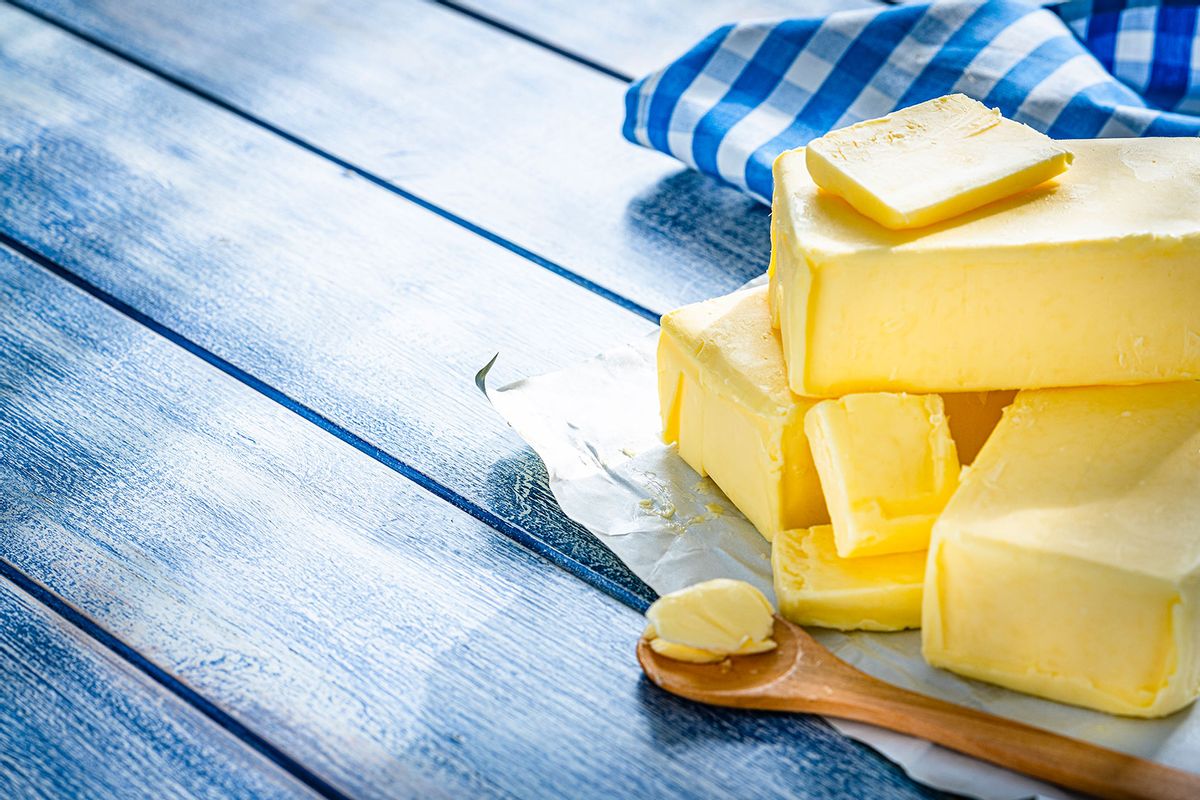“The Great British Baking Show” (or “Bake-Off,” depending on where you're watching) is an immensely popular series with a dedicated following. For many, the show offers a comforting background for a lazy day or work session. Others enjoy binge-watching it for the uplifting tone,which Salon's Ashlie D. Stevens once described as "a light-hearted competition infused with a spirit of collaboration and support centered on these bakers." She also noted that the show "thrives on the idea that even in competition, there is room for kindness."
For some viewers, however, the real temptation comes from wanting to recreate the masterpieces featured on-screen — or improve upon bakes that don’t quite hit the mark. After all, as Sara Bareilles's "Waitress" famously reminds us, there are three major ingredients in baking: "Sugar, butter, flour." Butter, in particular, often raises a lot of questions: What kind should I use? Should it be softened? Salted or unsalted? Can I use plant-based?
So, in order to better address those questions and get you primed and ready to do some post-show baking this weekend,
To get some expert advice, Salon spoke with Chef Trung Vu, chef-instructor of Pastry & Baking Arts at the Institute of Culinary Education in New York City, about all things butter.
When asked about his go-to butter for baking, Vu said, "I prefer to use unsalted butter for baking so that I have better control of the salt content of recipes. I like the nutty and creamy taste of Plugra butter, which comes from grass-fed cows."
But what if you only have whipped butter on hand? Vu explained, "Whipped butter would not be great to use since the additional air whipped in can throw off volume measurements — such as cups or tablespoons — in baking recipes." He added that sticks of butter are easier to work with for baking. "My favorite tool to 'chop' down butter for baking is my metal bench scraper."
As for the salted vs. unsalted debate, Vu had a lighthearted response: "Most baking recipes ask for unsalted butter so that you can add a controlled amount of salt. But to be honest, if all I have on hand is salted butter, I’m going to go ahead and make that chocolate chip cookie dough anyway and it will 100% be delicious." Hard to argue with that!
Want more great food writing and recipes? Subscribe to Salon Food's newsletter, The Bite.
For those avoiding dairy, Vu recommended a plant-based alternative: "A plant-based butter I’ve had some success with as a butter substitute is Tourlami, which claims to replace dairy butter in recipes 1:1. Indeed, my Pastry & Baking Arts class baked great croissants with Tourlami butter, which is made of fats mainly from from cocoa and coconut, but was somewhat lacking in the creamy, buttery flavor."
Baking can feel rigid compared to savory cooking, which often allows for more improvisation. But for some, that precision is part of the appeal. Vu explained the science behind butter’s moisture and fat content: "Butter that is higher in fat would logically follow that it has a lower water content and vice-versa. In most savory cooking, if you are melting or browning the butter, this would be immaterial. But in many baking recipes, you might be relying on some of that water to become steam to help leaven your pastry."
He gave puff pastry as an example where a lower fat, higher moisture butter might be preferable.
When it comes to lamination, the technique used for puff pastry and croissants, Vu said, "It’s best to use cold but malleable butter. Bakers will often beat or quickly paddle the butter in a stand mixer to soften it while it’s still cold."
He added, "The goal is for it to become flexible when laminating, but not to warm it up and have it melt or leech out of the dough. If your butter warms up too much while you are working with the dough, letting it rest for five to ten minutes covered in the refrigerator can be extremely helpful."
We need your help to stay independent
With so many butter options available — European-style, sweet cream, grass-fed, cultured, and organic — it can be overwhelming. Vu advised trying a variety, saying that "like a lot of things we eat and drink from eggs to coffee and wine, dairy has a wide range and contrast in flavors."
"Not only is this a fun way to eat —a butter sampling board with some sourdough? Yes please! — but sampling one after the other will allow you to better detect the nuances between the different butters," Vu said.
Vu also weighed in on clarified butter and (my favorite) browned butter. "There are some baking recipes are developed for clarified butter or ghee, but if a recipe calls for whole butter, it should not be substituted with these. Both clarified butter and ghee have no water, which would dramatically alter the outcome of a baking recipe that calls for regular butter." As for browned butter, he said, "The nutty taste it imparts is one of a kind, but like clarified butter and ghee, the water will have evaporated from the butter in order for it to brown, so usually these recipes have moisure added in other ways like eggs, milk or even water itself."
With Vu’s expert tips in mind, you’ll be well-prepared to bake a picture-perfect dessert that could hold its own in the "Bake Off" tent.



Shares